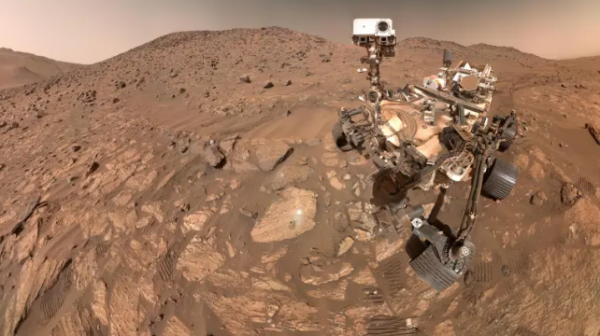SpaceX and Starship Development
With the rising studies of life on Mars and Starship development, SpaceX has become more relevant in today’s society than ever before.
The foundation of the innovative company goes back to 2002. When Elon Musk, a South African-born American entrepreneur, attempted to buy reimbursed Russian ballistic missiles to invest in his spaceflight ambitions, he found that they were far too expensive. “After my second or third trip back from Russia, I was like, ‘Whoa, there’s got to be a better way to solve this rocket problem,’ ” Musk stated at the 2018 SXSW conference in Texas. And so began the Space Exploration Technologies Corporation, or SpaceX, headquartered in Hawthorne, California. Musk’s company took off with the ultimate goal of revolutionizing the aerospace industry by reducing space transportation costs and allowing life to be multi-planetary by enabling colonization on Mars.
Over time, the aerospace company has reached significant milestones and made history in the era of commercial spaceflight. Falcon 1 was the first privately funded liquid fuel rocket to reach orbit in September 2008. In December of the same year, NASA awarded SpaceX a $1.6 billion contract for servicing the International Space Station (ISS). Additionally, to further mention a few advances, SpaceX was the first private company to successfully launch and return a spacecraft from Earth’s orbit, dock a spacecraft to the ISS, and send a crewed spacecraft to space boarded with astronauts Doug Hurley and Bob Behnken.
To accomplish such unprecedented missions, SpaceX has also faced multiple extensive setbacks. The first SpaceX Falcon 1 rocket in 2006 failed just 33 seconds after its launch due to a rusty nut. “We had a successful liftoff, and Falcon made it well clear off the launch pad, but unfortunately, the vehicle was lost later in the first stage burn,” Musk reported. In 2016, Falcon 9 and its commercial satellite payload exploded on the launch pad during fueling and test preparations in Florida. The company clarified that an issue around the oxygen tank in the upper stage contributed to its failure. Musk described it as “the most difficult and complex failure [they] have ever had in 14 years.”
The most recent failure of SpaceX worth noting is the explosion of the Starship prototype, designated SN10, that was launched on March 3rd, 2021. The Starship launched successfully from its test site in Boca Chica, Texas, and ascended towards an altitude of a little over six miles before making its way back to Earth. “Very nice, very nice,” narrated John Insprucker, who hosted the SpaceX webcast of the launch. The prototype was set back down, standing in one piece but tilted at the landing pad. It eventually collapsed in flames approximately three minutes after its landing. “SN10 engine was low on thrust due (probably) to partial helium ingestion from the fuel header tank. Impact of 10m/s crushed legs & part of skirt,” tweeted Musk, explaining the probable cause of the incident.
Despite the explosion, Insprucker stated that the goal of “[gathering] the data on controlling the vehicle while re-entering” was a success. “Multiple fixes in work for SN11,” apprised Musk in a tweet. Starship is still in the early stages of development, and SpaceX is well on its way to making further improvements and revolutionizing aerospace history.







